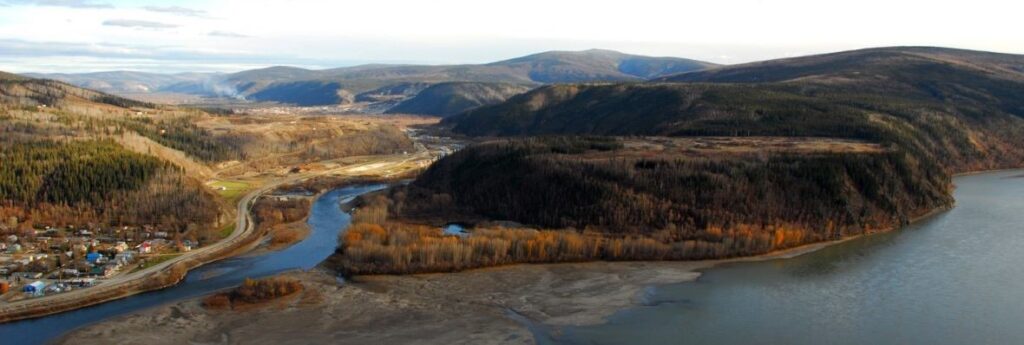Canada has another UNESCO World Heritage Site. Tr’ondëk-Klondike, located in the homeland of Tr’ondëk Hwëch’in in the Yukon, was inscribed on the prestigious United Nations list at the recent 45th session of the World Heritage Committee in Saudi Arabia. It is the 22nd site in this country to earn the designation since Canada joined the World Heritage Convention in 1976.
Tr’ondëk-Klondike tells the story of Tr’ondëk Hwëch’in’s experiences and responses to the startlingly rapid expansion of colonialism in their homeland between 1874 and 1908. Archaeological and historical evidence denotes timelines of both Indigenous and settler occupation of important sites throughout the region and together are a comprehensive record of the events that transformed the Tr’ondëk Hwëch’in way of life.
“The inscription of Tr’ondëk-Klondike to the World Heritage List is a momentous occasion and the result of many years of dedication from everyone involved,” stated the minister responsible for Parks Canada, Steven Guilbeault.
Tr’ondëk-Klondike World Heritage site is comprised of eight distinct heritage locations: Fort Reliance; Ch’ëdähdëk (Forty Mile); Ch’ëdähdëk Tth’än K’et (Dënezhu Graveyard); Fort Cudahy and Fort Constantine; Tr’ochëk; Dawson City; Jëjik Dhä Dënezhu Kek’it (Moosehide Village); and Jëjik Dhä Tthe Zra’y Kek’it (Black City). The sites collectively total 334 hectares of land and encompass component sites along parts of the Yukon River and the Blackstone River.
The unique cultural makeup of the region is the product of the coexistence of Tr’ondëk Hwëch’in and settlers over the last century and a half. The Tr’ondëk Hwëch’in experience and adaptation to European settler colonialism marked the landscape with distinct cultural heritage attributes that remain to this day.
“My first thought with this inscription, was to remember all the people who contributed, the people who worked so tirelessly to tell the story, to share the story, making sure our history would not continue to be overshadowed by the gold rush narrative,” said Debbie Nagano, Director of Heritage for Tr’ondëk Hwëch’in.
She added, “The inscription… confirms what we have always known – that this land is very sacred to us, and it tells a story relevant to the world. The ongoing challenge of colonialism is a system of oppression that has affected many Indigenous peoples, it is important that we are talking about this, and people are learning. Visitors to our lands will benefit from this knowledge.”
“The story told through Tr’ondëk-Klondike at last provides crucial and often harrowing perspective long missing from the established narrative of the Klondike Gold Rush,” noted John Streicker, Minister of Tourism and Culture, Government of Yukon.
Tr’ondëk-Klondike is the Yukon’s first cultural World Heritage site. Kluane/ Wrangell-St. Elias/ Glacier Bay/ Tatshenshini-Alsek, located in Yukon, Alaska, and BC, was inscribed as a natural World Heritage site in 1979.
Here are the other Canadian UNESCO World Heritage sites:
• Anticosti, Quebec
• Writing-on-Stone / Áísínai’pi
• L’Anse aux Meadows National Historic Site
• Nahanni National Park Reserve
• Dinosaur Provincial Park
• Head-Smashed-In Buffalo Jump
• SG̱ang Gwaay
• Wood Buffalo National Park
• Canadian Rocky Mountain Parks
• Historic District of Old Québec
• Gros Morne National Park
• Old Town Lunenburg
• Waterton-Glacier International Peace Park
• Miguasha National Park
• Rideau Canal
• Joggins Fossil Cliffs
• Landscape of Grand Pré
• Red Bay Basque Whaling Station
• Mistaken Point
• Pimachiowin Aki

